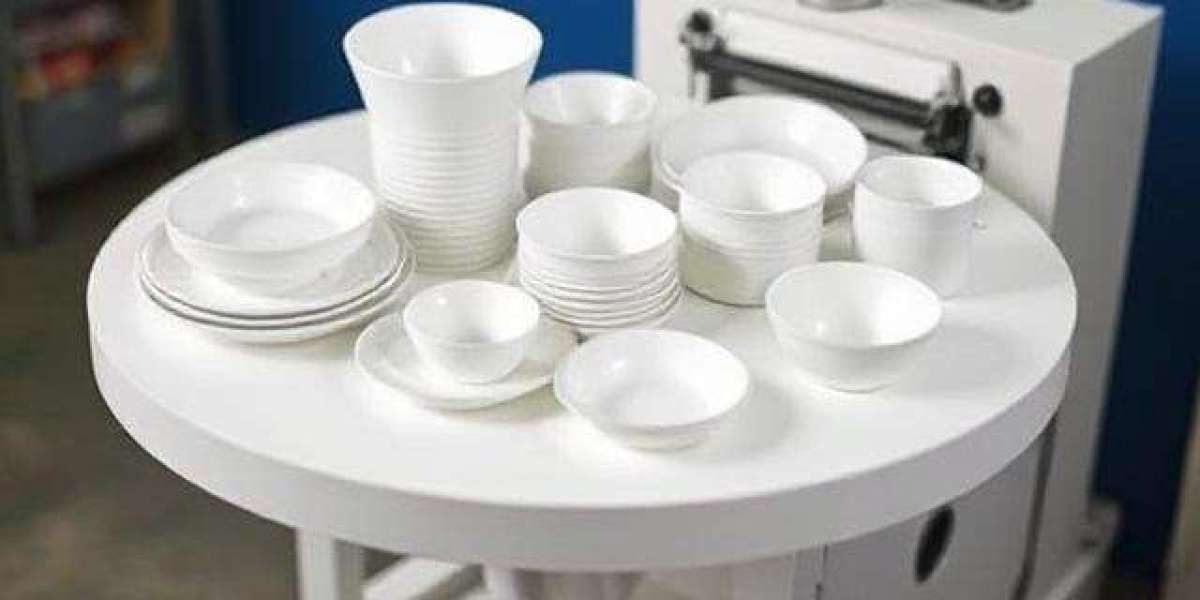When you imagine a pulp molding factory, your mind probably jumps straight to the main event: the massive, rotating forming machine, methodically churning out egg cartons or food trays. While the Rotary Pulp Molding Machine is indeed the star of the show, it cannot perform alone. It's the lead singer in a band, and its success depends entirely on the tight-knit group of supporting players around it.
A successful pulp molding operation is a complete ecosystem. A failure in any one of the supporting systems will bring the entire production line to a standstill. For any entrepreneur or business planning to invest in this technology, understanding this essential support equipment is just as important as understanding the forming machine itself.
Let's take a tour of the factory floor and meet the unsung heroes that make a pulp molding line a complete, profitable system.
1. The Powerhouse: The Air Compressor
Compressed air is the invisible force that powers many of the critical movements in your production line.
- What it is: A large, industrial air compressor that generates high-pressure air, which is stored in a receiving tank.
- Its Role:
- Product Transfer: The most critical function. After a product is formed on the mesh mold, a precisely timed blast of compressed air is often used to "blow" it off the forming mold and onto the transfer mold that carries it to the dryer. Without perfect air pressure, this transfer will fail, causing jams and halting production.
- Pneumatic Controls: Many valves and small cylinders throughout the system are powered by compressed air due to its speed and reliability.
- Why it's Essential: An undersized or unreliable air compressor will lead to inconsistent product transfers, which is one of the most common causes of downtime on a pulp molding line.
2. The Heartbeat: The Vacuum Pump
If the forming machine is the star, the vacuum system is its powerful heart, driving the very process of creation.
- What it is: A large, powerful pump (often a liquid-ring vacuum pump) designed to move huge volumes of air and water.
- Its Role:
- Forming the Product: This is its primary job. The vacuum pump creates powerful suction from behind the mesh forming molds. When the mold dips into the pulp slurry, this suction pulls water through the mesh, causing the pulp fibers to deposit onto the mold's surface and take its shape. The strength and stability of the vacuum directly determine the thickness and quality of the product.
- Dewatering: It removes a significant amount of water during the forming stage, which reduces the energy needed for drying later on.
- Why it's Essential: A weak or failing vacuum pump means thin, poor-quality products and a slow, inefficient process. It's the single most important utility for the forming stage.
3. The Lungs: The Water Pumps and Piping System
Water is the lifeblood of a pulp molding factory, acting as the carrier for the fibers. The network of pumps and pipes are the veins and arteries that keep it all flowing.
- What they are: A series of industrial pumps and a network of large-diameter stainless steel pipes.
- Their Role:
- Slurry Transfer: Moving the thick pulp slurry from the hydrapulper to the consistency adjustment vats, and finally to the forming machine.
- White Water Recycling: Pumping the "white water" (water extracted during the vacuum process) from a collection tank back to the hydrapulper to be reused. This closed-loop system is critical for water conservation.
- Clean Water Supply: Supplying fresh water where needed.
- Why they're Essential: Clogged pipes or a failing pump will starve your forming machine of its raw material. A well-designed piping system with properly sized pumps is crucial for maintaining consistent slurry flow and pressure.
4. The Workstation: The Mold Cleaning Station
Over time, the fine mesh on your forming molds will inevitably become clogged with small fibers and additives. A clean mold is essential for a high-quality product.
- What it is: A designated area, often with a drainage system, equipped with a high-pressure washer.
- Its Role: To allow operators to quickly and effectively clean the molds during scheduled maintenance. The high-pressure water jet dislodges trapped fibers from the mesh without damaging it.
- Why it's Essential: Dirty molds lead to a host of problems: poor vacuum flow, uneven product thickness, surface blemishes, and reduced production efficiency. A dedicated, easy-to-use cleaning station ensures this critical maintenance task is done properly and regularly.
5. The Finishing Touch: The Stacking and Packing System
Your machine can produce thousands of products per hour. How do you handle that massive output?
- What it is: This can range from a simple collection table to a fully automated system.
- Its Role:
- Manual Stacking: At the most basic level, an operator collects the finished products as they exit the dryer and stacks them manually.
- Automatic Stacker: A more advanced system uses pneumatic arms or conveyors to automatically count and stack the products into neat piles of a predetermined quantity.
- Automatic Packer/Baler: In very high-volume operations, a baler can automatically compress and wrap large stacks of products (like egg trays) for bulk shipment.
- Why it's Essential: An efficient stacking and packing system is key to managing your output. Automating this process can significantly reduce labor costs and become a major source of savings in a high-volume factory.
BonitoPak: The Complete Ecosystem Provider
When you look at this list, it becomes clear why choosing a turnkey solution provider is so important. A supplier who only sells you the forming machine is leaving you to source, size, and integrate all these other critical components on your own—a complex and risky task.
At BonitoPak, we design and deliver the entire ecosystem.
- We calculate the precise air, water, and vacuum demands of your forming machine and provide perfectly matched, high-quality support equipment.
- Our turnkey solutions include all the necessary pumps, pipes, and control systems, all integrated to work together seamlessly.
- We can equip your line with everything from basic manual collection to fully automated stacking and packing systems to match your budget and labor goals.
We understand that a successful factory is a complete system. We don't just deliver the star performer; we provide the entire world-class band.
Ready to build a complete, integrated, and profitable pulp molding factory? Contact BonitoPak and let's talk about the full ecosystem you need for success.








